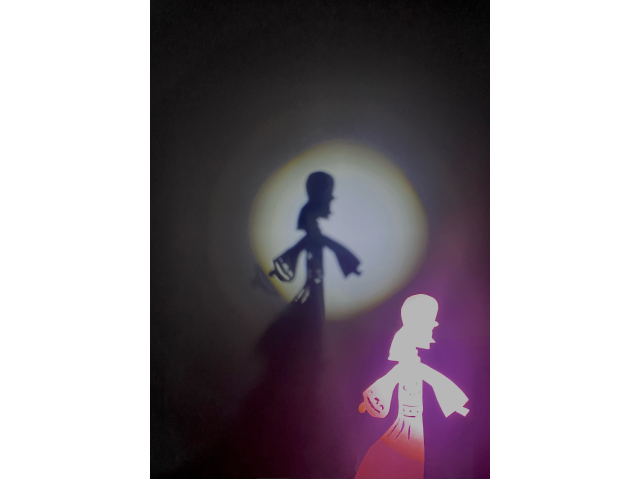Shadow Dancer
Light travels in straight lines unless it encounters opaque objects. Those objects resist the transmission of light, causing light to reflect and, thus, be seen by the naked eye.
The figure shown here consists of a flashlight beaming light on a paper puppet. The circular shape of the flashlight bezel restricts the light spread to a circular area. The faint halo outside the main bright spot results from the structure of the flashlight: the light bounces off the wall and some of the right rays reflect onto the flat metal plate between the lens and the plastic cover. The illuminated part of the wall is visible because light is reflected to our eyes. However, the puppet’s shadow is casted — this phenomenon occurs because the light first reflects off objects that are closer to the light source (in this case, the opaque paper). Thus, the light doesn’t pass through the puppet, creating an absence of light in that un-illuminated part of the wall.
The image consists of two shadow regions: the umbra (the darkest part of the shadow cast by the puppet) and the penumbra (the lighter part of the shadow, indicating the boundary of the illuminated circle). The size of the shadow depends on the distance between the light source and the object: the closer the object to the light source, the bigger the shadow. The puppet is close to the flashlight; thus, its shadow is much larger than the puppet itself is.
Mary Lin
Description
Essay Title: Shadow Dancer
Category: Contrived
Photo Number: 9809
School: Poly Prep Country Day School
Teacher Name: Jenna Peet
